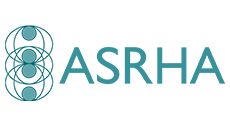Aboriginal and Torres Strait Islander People
Overview
- Higher rates of sexually transmitted infections and blood borne viruses occur among Aboriginal and Torres Strait Islander people, particularly in remote and very remote communities.
- Routine testing is important as STI rates are largely driven by social factors including poverty, lack of access to health services, incarceration and intergenerational trauma.
- People who live in urban settings and who have a connection to higher prevalence remote communities with poorer access to health care, are also at an increased risk of infection.
- Trichomoniasis is endemic in some rural and remote populations and people should be tested according to local guidelines.
- Although rates of human immunodeficiency virus (HIV) are similar to the non-Indigenous population, a recent diverging trend in HIV rates, high rates of untreated STIs enhancing HIV transmission, and greater difficulties in access to HIV treatment make this group potentially more vulnerable to HIV.
- Regular testing for chlamydia, gonorrhoea, syphilis and HIV is recommended for Aboriginal and Torres Strait Islander people under the age of 30 (or 35 in remote communities) who are not known to be in a stable, long-term monogamous relationship, as per the Standard Asymptomatic Check-up Guideline.
- Syphilis incidence remains disproportionately higher in Aboriginal and Torres Strait Islander peoples.
- Testing should be offered to everyone who is pregnant, in a declared syphilis outbreak area, has symptoms, or requests STI testing .
- People at a reduced risk may be tested less frequently. This includes those who are less sexually active or in a monogamous relationship.
- Confirm hepatitis B status and vaccinate if not immune.
- In addition, testing for trichomoniasis in remote and some rural areas according to local prevalence is recommended.
- In remote areas, check for donovanosis with nucleic acid amplification test (NAAT) in anyone with an ano-genital ulcer.
- Testing for hepatitis C should be done only if there is a history of injecting drug use, current HIV pre-exposure prophylaxis (PrEP) use, anal sex with a partner with HCV infection, incarceration, non-professional tattoos or body piercings or receipt of organs or blood products before 1990.
- A sexual health check is an ideal time to discuss cervical cancer screening status and offer to organise CST if due.
|
Infection |
Consideration |
|
Consider self-collection of samples for testing |
|
|
Consider self-collection of samples for testing If NAAT test result is positive, take swab at relevant site(s) for culture, before treatment. |
|
|
Consider self-collection of samples for NAAT testing |
|
|
Vaccinate if not immune. Vaccination is free in most states/territories for sexual/household contacts. |
|
|
Interpretation of syphilis serology is complex. Seek expert advice if serology is positive. Repeat the test if there is potential exposure within the previous 90 days (window period) |
|
|
Repeat test if patient exposed within previous 6 weeks (window period) |
NAAT – nucleic acid amplification test
Specimen collection guidance
Clinician collected | Self-collection
Self-collection of specimens is acceptable and can be helpful in situations where the person is uncomfortable with the clinician collecting the sample directly or where consultation times are limited.
Practice points
- Offer testing opportunistically or as part of an annual MBS Item 715 Health Check when seeing Aboriginal and Torres Strait Islander people who are asymptomatic, especially young people aged 15-30 (or from age of first sexual exposure up to 34 years if from remote and very remote areas).
- Additional testing may be required for Aboriginal and Torres Strait Islander people who inject drugs ; people who have history of/current incarceration; men who have sex with men , sistergirls and transgender people; people living with HIV and people with hepatitis B or hepatitis C.
- Always offer examination and test when symptoms are present – discharge, dysuria, pelvic/low abdominal pain, post-coital or intermenstrual bleeding, dyspareunia or genital lesions.
- Consider checking cervical cancer screening status and offering cervical screening alongside STI testing. Self-collected samples can be used in certain situations.
- It is not recommended to routinely test for herpes with serology. Consider testing for herpes and genital warts only if there are clinical signs and symptoms.
Special considerations
- Cultural safety in health care is essential to achieving good health outcomes for individuals and requires integration of cultural safety standards within health care services: Training is available for health workers through CATSINaM & RACGP.
- Clinicians should have a defined model of care for Aboriginal and Torres Strait Islander people to ensure shared decision making, respect for cultural values, addressing racism/inequity. Consider the use of champions in the service to achieve this.
- Where possible offer Aboriginal patients the option of their choice of clinician gender.
- Aboriginal Health Practitioners (AHP) are vital in good clinical care and where possible should lead or be actively involved in people's care. AHP play a key role in community engagement, health promotion, vaccination and contact tracing.
- STI testing and treatment should be part of holistic patient-centred primary health care that is culturally safe and promotes sexual and reproductive health.
- Point of care tests (POCT) are available in some areas, see Syphilis POC Testing for more information.
- Aboriginal and Torres Strait Islander People’s Health Assessments for Children, Adults and Older People may be used where an STI screen forms part of a sexual health assessment
- Contact tracing is important and best undertaken when appropriate and culturally sensitive support services are readily available to both the index case and contacts.
If test results are positive, refer to STI management section for advice on:
Even if all test results are negative, use the opportunity to:
- Ensure follow-up to investigate alternative causes of any symptoms.
- Educate about condom use, contraception, HIV PrEP/PEP, safe injecting practices, consent, CST and vaccinations for HAV, HBV and HPV as indicated.
- Discuss and activate reminders for regular screening tests according to risk, especially if the person’s lifestyle indicates the need for more frequent screening.
- Proportion of Indigenous regular clients aged 15 to 34 who had a comprehensive STI check (chlamydia and/or gonorrhoea) within the previous 12 months.
- Clinic cultural safety practices and staffing cultural safety training.
- Australian Government, Department of Health. MBS Health Assessments Items 701, 703, 705, 707, 715 and 10986. Canberra: Commonwealth of Australia, 2013. Available online (last accessed 20 October 2021).
- NSW Department of Health. NSW HIV/AIDS, Sexually Transmissible Infections and Hepatitis C Strategies: Implementation Plan for Aboriginal People 2006-2009. Sydney: Department of Health, 2007.
- Sexual Health and Blood Borne Virus Unit. Centre for Disease Control. NT Guidelines for the Management of Sexually Transmitted Infections in the Primary Health Care setting. Fifth edition. 2019. Darwin: NT Government; 2019.


